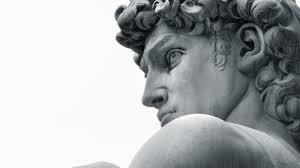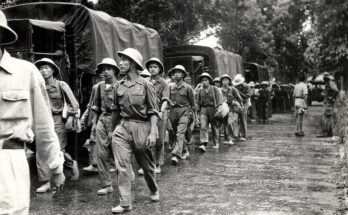Introduction
Imagine a time when the world woke up from a long slumber of cultural stagnation. A time of breathtaking art, groundbreaking discoveries, and a renewed thirst for knowledge. That’s the Renaissance for you a glorious period that reshaped Europe and laid the foundation for the modern age. But what exactly was the Renaissance, and why does it matter? Let’s dive into this fascinating era and explore its profound impact on art, science, and culture.
What Was the Renaissance?

The Renaissance, meaning “rebirth” in French, was a cultural movement that spanned roughly from the 14th to the 17th century. Emerging in Italy, particularly in Florence, it marked the transition from the medieval world to the modern one. It wasn’t just a single event but a ripple effect of ideas, creativity, and innovation that spread across Europe.
Why Did the Renaissance Begin in Italy?
You might wonder, why Italy? The answer lies in its geography and history. Italy was home to the remnants of the Roman Empire, with its classical heritage acting as a source of inspiration. Additionally, wealthy merchant families like the Medici in Florence financed artists, scientists, and scholars, creating an environment ripe for innovation.
The Revival of Classical Learning
During the Renaissance, there was a renewed interest in the works of ancient Greek and Roman scholars. This revival, known as humanism, emphasized the potential of humans to achieve greatness. Think of it as rediscovering old treasures and giving them a modern twist. Scholars like Petrarch and Erasmus played key roles in this intellectual awakening.
Artistic Explosion: A New Vision of Beauty
Art during the Renaissance wasn’t just about painting pretty pictures. It was about exploring humanity, emotions, and the natural world. The use of perspective, light, and shadow created a sense of realism never seen before. Artists like Leonardo da Vinci and Michelangelo pushed the boundaries of creativity, leaving us masterpieces like the “Mona Lisa” and the Sistine Chapel ceiling.
The Role of Patrons
Behind every great artist was often a patron. The Medici family, for instance, funded countless works of art and architecture. Without their support, we might never have seen some of the Renaissance’s most iconic creations.
Science and Discovery: A New Age of Curiosity
The Renaissance wasn’t just about art; it was also a time of scientific breakthroughs. Galileo’s telescopic observations revolutionized astronomy, while Copernicus proposed a heliocentric model of the solar system. These discoveries challenged long-held beliefs and paved the way for modern science.
The Printing Press Revolution
One invention that amplified the Renaissance’s impact was the printing press. Johannes Gutenberg’s movable type made books more accessible, spreading knowledge like wildfire. Imagine living in a world where information was scarce, and suddenly, it’s at your fingertips. That’s the kind of transformation the printing press brought about.
Cultural Shifts: From Feudalism to Individualism
The Renaissance also transformed societal structures. The rigid feudal system gave way to a more individualistic and urban society. People began to see themselves not just as part of a collective but as unique individuals with the power to shape their destinies.
The Birth of Renaissance Man
The idea of a “Renaissance man” a person skilled in multiple disciplines was born during this era. Leonardo da Vinci is the quintessential example, excelling as an artist, inventor, and scientist. It’s like being a modern-day polymath, only with more paint and fewer computers.
Renaissance Literature: Words That Shaped the World
The Renaissance was also a golden age for literature. Writers like William Shakespeare, Dante Alighieri, and Geoffrey Chaucer captured the human experience in ways that resonate even today. Their works, rich in themes of love, ambition, and tragedy, continue to inspire readers worldwide.
Architecture: Building the Future
Architecture during the Renaissance combined beauty with functionality. Architects like Filippo Brunelleschi introduced linear perspective in design, creating structures that were not only grand but also harmonious. St. Peter’s Basilica in Vatican City is a stunning example of Renaissance architectural brilliance.
Music: A Harmonious Revolution
The Renaissance era was also a time of musical innovation. Composers like Josquin des Prez and Giovanni Pierluigi da Palestrina experimented with polyphony, creating intricate harmonies that elevated music to new heights. Music became a powerful medium for both religious and secular expression.
The Spread of Renaissance Ideas
The Renaissance wasn’t confined to Italy. It spread across Europe, influencing countries like France, Germany, and England. Each region added its unique flavor to the movement, enriching it further. For instance, the Northern Renaissance placed a stronger emphasis on detailed realism in art.
Challenges and Controversies
While the Renaissance was a period of progress, it wasn’t without its challenges. The Church often clashed with scientists and humanists, as new ideas threatened traditional beliefs. Additionally, not everyone benefited equally from this cultural rebirth. The lower classes often remained untouched by its advancements.
The Legacy of the Renaissance
The Renaissance’s impact is still felt today. Its emphasis on human potential and innovation laid the groundwork for the Enlightenment and the modern world. Whether it’s in art, science, or philosophy, the echoes of the Renaissance continue to inspire us.
How Can We Relate to the Renaissance Today?
In many ways, we’re living through our own kind of Renaissance, with rapid advancements in technology and a growing appreciation for creativity. The spirit of curiosity and innovation that defined the Renaissance is as relevant now as it was centuries ago.
The Unconventional Marriage of Queen Victoria and Prince Albert: A Royal Partnership
Conclusion
The Renaissance was more than just a historical period; it was a transformation that reshaped the way we think, create, and live. Its legacy reminds us of the limitless potential of human creativity and the enduring power of knowledge. So, the next time you admire a painting or marvel at a scientific discovery, remember—it all started with a rebirth.
FAQs
1. What were the main causes of the Renaissance?
The Renaissance was fueled by a combination of factors, including the rediscovery of classical texts, the rise of wealthy patrons, and advancements in technology like the printing press.
2. How did the Renaissance impact modern science?
The Renaissance laid the foundation for modern science by encouraging observation, experimentation, and questioning of traditional beliefs. Figures like Galileo and Copernicus revolutionized fields like astronomy and physics.
3. Who were some key figures of the Renaissance?
Notable figures include Leonardo da Vinci, Michelangelo, Galileo Galilei, William Shakespeare, and Filippo Brunelleschi, each contributing significantly to their respective fields.
4. How did the Renaissance spread across Europe?
The spread of Renaissance ideas was facilitated by trade, travel, and the printing press, which made books and knowledge more accessible to a broader audience.
5. What is the difference between the Italian and Northern Renaissance?
While the Italian Renaissance focused on classical themes and humanism, the Northern Renaissance emphasized detailed realism and social reform.


